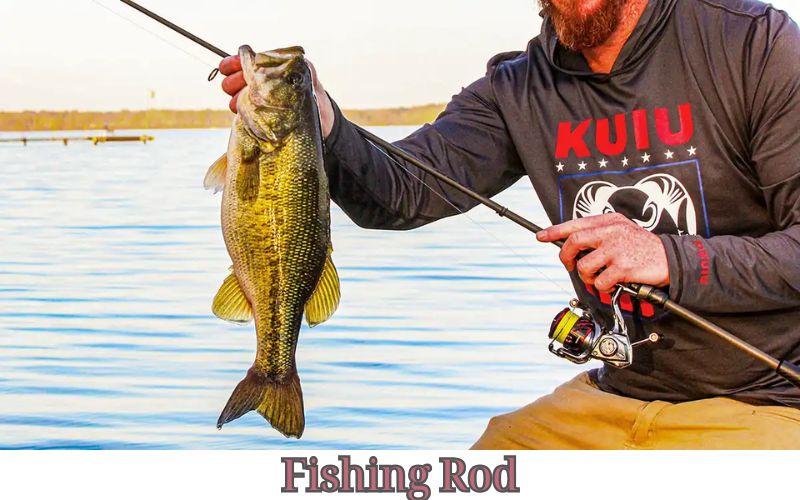Fishing is a timeless hobby that connects us with nature and challenges our skills. At the heart of this pursuit lies one essential tool: the fishing rod. Whether you’re a seasoned angler or a beginner, understanding fishing rods is key to improving your technique and overall experience.
Luxenovas.xyz explores everything you need to know about fishing rods—from their types and materials to tips for choosing the perfect one for your needs.
Understanding Fishing Rod Basics
A fishing rod is more than just a stick for casting lines. It’s a finely engineered tool designed to enhance precision, power, and control. Here are the key components of a fishing rod:
1. Rod Blank
The main body of the rod, also known as the blank, determines its strength, sensitivity, and action.
2. Handle/Grip
Usually made of cork, foam, or a combination, the handle is where you hold the rod. Its comfort and durability can impact your fishing experience.
3. Reel Seat
This part secures the fishing reel to the rod. Adjustable reel seats provide versatility for different reel types.
4. Guides
The circular loops along the rod guide the fishing line and ensure smooth casting and retrieval. High-quality guides reduce friction and improve line durability.
5. Tip
The rod’s tip is the most sensitive part, allowing anglers to detect even the slightest nibble.
Types of Fishing Rods
Fishing rods come in various styles, each tailored to specific fishing techniques and environments. Here are the most common types:
1. Spinning Rods
Spinning rods are versatile and beginner-friendly. They pair with spinning reels and are ideal for freshwater and light saltwater fishing.
- Best For: Small to medium-sized fish.
- Key Feature: Guides face downward, preventing line tangles.
2. Casting Rods
Casting rods are designed for baitcasting reels and offer greater control and accuracy.
- Best For: Targeting larger fish species.
- Key Feature: Guides face upward to handle heavier lines.
3. Fly Rods
Fly rods are used in fly fishing, where anglers cast lightweight artificial flies.
- Best For: Fishing in rivers and streams for trout, salmon, and bass.
- Key Feature: Long and flexible for precise casting.
4. Trolling Rods
Trolling rods are built for dragging lures or baits behind a moving boat.
- Best For: Catching large saltwater fish like marlin and tuna.
- Key Feature: Sturdy and capable of handling heavy lines.
5. Telescopic Rods
These rods are collapsible, making them perfect for travel and storage.
- Best For: Casual fishing or anglers on the go.
- Key Feature: Compact and portable.
6. Surf Rods
Surf rods are used for casting long distances from the shore.
- Best For: Beach and surf fishing.
- Key Feature: Extra-long for greater casting range.
Materials Used in Fishing Rods
The material of a fishing rod impacts its performance, weight, and durability. Here are the most common materials:
1. Fiberglass
- Pros: Durable, affordable, and flexible.
- Cons: Heavier and less sensitive than other materials.
2. Graphite
- Pros: Lightweight, sensitive, and powerful.
- Cons: More expensive and prone to breaking under high stress.
3. Composite (Fiberglass + Graphite)
- Pros: Combines the strengths of both materials, offering a balance of durability and sensitivity.
- Cons: Slightly heavier than graphite rods.
How to Choose the Right Fishing Rod
Choosing the perfect fishing rod depends on several factors, including the type of fish you’re targeting, your preferred fishing style, and your experience level.
1. Consider the Action
Rod action refers to how much a rod bends under pressure:
- Fast Action: Bends near the tip; ideal for sensitivity and quick hook sets.
- Medium Action: Bends in the middle; versatile for various techniques.
- Slow Action: Bends throughout; suitable for light lines and small fish.
2. Match the Power to Your Needs
Rod power indicates its strength:
- Light Power: For small fish like panfish and trout.
- Medium Power: Suitable for bass and walleye.
- Heavy Power: For big fish like catfish and pike.
3. Length Matters
Shorter rods (5-7 feet) offer greater accuracy, while longer rods (8-12 feet) provide better casting distance.
4. Choose the Right Material
For beginners, fiberglass rods are a reliable choice. Advanced anglers may prefer graphite for its sensitivity.
5. Budget Wisely
While it’s tempting to go for high-end rods, there are excellent budget-friendly options available.
Maintenance Tips for Fishing Rods
To ensure your fishing rod lasts, follow these care tips:
1. Clean After Each Use
Rinse your rod with freshwater to remove dirt and salt.
2. Check for Damage
Inspect the guides, reel seat, and blank for cracks or wear.
3. Store Properly
Store your rod in a dry, cool place. Use a rod holder to prevent warping.
4. Avoid Overloading
Match the rod’s power and line capacity to the fish you’re targeting.
Popular Fishing Rod Brands
Several brands are renowned for their quality and innovation. Here are a few top contenders:
1. Shimano
Known for its precision engineering, Shimano offers a wide range of rods for all skill levels.
2. Ugly Stik
Ugly Stik rods are famous for their durability and affordability, making them a favorite among beginners.
3. Daiwa
Daiwa combines advanced technology with stylish designs, offering exceptional performance.
4. St. Croix
St. Croix specializes in premium rods tailored for specific fishing techniques.
5. Abu Garcia
Abu Garcia rods are celebrated for their versatility and innovative features.
Benefits of Using a Quality Fishing Rod
Investing in a good fishing rod enhances your fishing experience in many ways:
- Improved Accuracy: High-quality rods allow for precise casting.
- Better Sensitivity: Detect bites and subtle movements with ease.
- Enhanced Durability: Quality materials withstand wear and tear.
- Versatility: Specialized rods cater to different fishing techniques.
Conclusion
A fishing rod is more than a tool; it’s an extension of your skill and passion for the sport. By understanding the types, materials, and features of fishing rods, you can choose one that suits your needs and elevates your fishing experience.
Whether you’re angling in freshwater streams, surf casting from the shore, or targeting trophy fish, the right fishing rod makes all the difference. Explore the wide range of options available, and gear up for your next adventure. Happy fishing!

